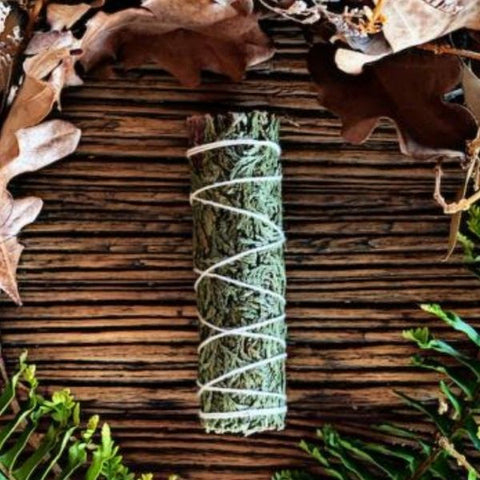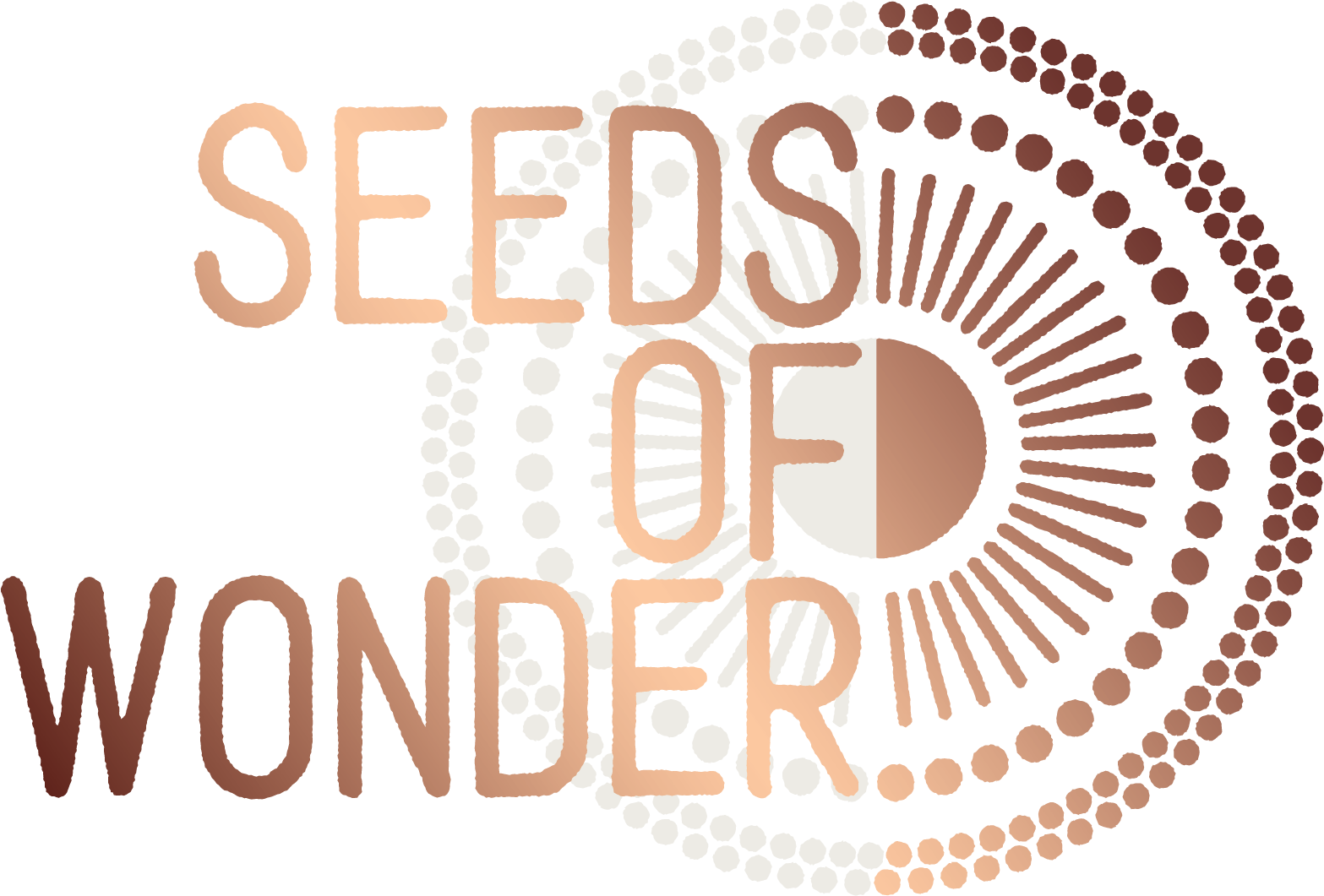The ins and outs of smudging
Smudging has been practiced in numerous cultures for centuries – millennia even. It is used for cleansing, releasing negative energies and bringing in positive ones. While this is a spiritual practice there is some scientific research that supports the theory that you are quite literally clearing the air of bacteria.
Different smokes/plants
You can use one herb in a smudge stick, or have a mixture that could include up to 30 plants with different properties.

Sage
In Native North American and Indigenous cultures sage represent the life force and a woman’s maternal lineage. It brings clarity, vision, strength and wisdom. It is also believed that sage bans evil spirits and negative energies, thoughts and feelings.
Imphepho (African Sage)
The smoke of Imphepho is used to cleanse energy, as an offering whilst praying, and to invoke trance states.
Palo Santo
Palo Santo means Holy Wood in Spanish. Palo Santo is used during ceremonies and before meditation to raise your vibration.
Sweetgrass
Sweetgrass signifies kindness – when you walk on it, it bends but does not break. This reminds you to act out of kindness instead of from hostility. The smoke from Sweetgrass carries your prayers to the spirit world where they will be seen, heard and remembered.
Copal
Copal is a tree sap or resin that comes from the Buresa tree in Southern Mexico. It was used by the Mayans and Aztecs as offerings to their gods and is believed to remove diseases from the body. It helps to create a peaceful mind and releases energy blockages, and is often used before ceremonies or meditation.
Sandalwood and camel grass mixture
Sandalwood and camel grass have been shown to inhibit microorganisms (including Candida albicans and Bacillus subtilis, E. coli and Staphylococcus aureus) in between nine and 11 minutes. A mixture of these two makes their antimicrobial properties more effective.
Another study done on African wormwood, lavender tree, the resurrection plant, hard fern and camphor bush, found that the smoke from dried material from these plants slowed down the growth of organisms more than extracts obtained both through the use of methanol and acetone. This means that the smoke from these plants has a higher microbial effect than essential oils – they keep things cleaner.
More science behind smudging
Researchers found that a room treated with a specific medicinal smoke for one hour had 94% less bacteria and that the cleaner air lasted up to 24 hours in a closed room. Some bacteria were even absent from the open room after 30 days. Although the plant used in this particular study is Havan sámagri, a mixture of around 60 herbs popularly used in India, it does show how smudging can physically clear the air and not just spiritually.
Researchers found that performing a Yagya (see below), along with chanting, had a ‘higher zone of inhibition values’. This means that it had a bigger effect of antimicrobial activity on human pathogens. Still not sure what all that jargon means? It means it worked better to get rid of anything that could make you sick!
Yagya
Yagya is an ancient Vedic fire-ritual that means sacrifice, devotion, worship and offering. Yagya is usually conducted by burning wood along with dried medicinal plants and ghee while chanting a mantra. Non-yagya is just the burning of wood with ghee. Chant the Gayatri Mantra while smudging to increase the antimicrobial activity of the smoke.
How to Smudge
You can use smudging to clear your home, your physical body or your soul. You can also use it to create a clear, calm and peaceful atmosphere before meditating or doing a ceremony, even before a yoga practice. It is also a powerful bridge that can strengthen your connection with the spiritual world. Smudging is a ritual and should be approached with respect and intention.
While exactly how to smudge is not cast in stone and you can let your intuition guide you… there should always be the intention… there should always be the respect.
The tools that you use when smudging (the bowl, fire source, feather and such) should be made from a natural material – it is all about keeping it pure and connecting with Mother Earth and the spiritual realm. Each element involved in smudging honours one of the cardinal directions.
- Water is represented by the bowl or shell.
- Earth is represented by the herbs or plants.
- Air is represented by the feather that creates wind.
- Fire is represented by the flame that is used to light the smudge material.
This is why many smudging rituals or ceremonies include prayers to the four cardinal directions.
You can fan the smoke either with your hand or a feather to wash over a body, through a space or over objects.
Take a few moments to become quiet and fully present. Form your intention and hold on to it while growing it in your mind, body and the space around you. You will likely already feel a shift in energy just by doing this.
Steps to perform a smudging ritual
- If you are using a smudge bowl and loose leaves, remove the stems from the herbs and place only the actual leaves or blades in the bowl.
- Open the windows if you are inside to allow air to flow in from outside.
- Light the herbs (in the bowl if you are using loose leaves or light the stick if you have a smudge wand).
- Allow the plants to burn for about 20 seconds.
- Extinguish the flames by waving your hand over the herbs. Smoke will rise slowly from your smudging material.
- Start with cleansing yourself.
- Start at your head and work down.
- Slowly move the smoke around our head and then down over your body.
- Use your feather or a cupped hand to wash the smoke over your body.
- Stay focused. Stay calm. Stay with your intention.
- Move around the room and wash the smoke over any objects or furniture.
- If you are using a smudge stick, use the bowl to catch any ash that drops.
- Pay special attention to corners where energy could get stuck.
- I like to open all drawers and cupboards to cleanse the insides while I am at it.
- I also pay closer attention to areas where I spend a lot of time or where lots of energies come through (like the lounge or kitchen).
- You can cleanse any special or sacred objects while you are cleansing your home like your malas, or you can dedicate a specific smudging ritual to them.
- Once you are finished return the ashes from the burned plants back to the earth.
- Stub out any remaining leaves or wand. You can reuse the wand for future smudging.

Some cautions about smudging
There is that saying, “Too much of a good thing’. That is relevant with smudging. While you could do some smudging every day (I like a quick, regular cleansing with Palo Santo), too much could cause issues with your respiratory tract and organs.
If you have respiratory issues check with your doctor or healer before smudging and consider conducting your smudging rituals in well-ventilated spaces.
Avoid smudging around infants, pregnant women or people with asthma or allergies. Also keep in mind that some herbs and plants (and the smoke from them) could be harmful to animals including dogs and cats.
You can grow and make your own smudge materials or take a look at what I have to offer here.






